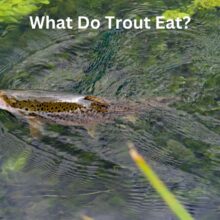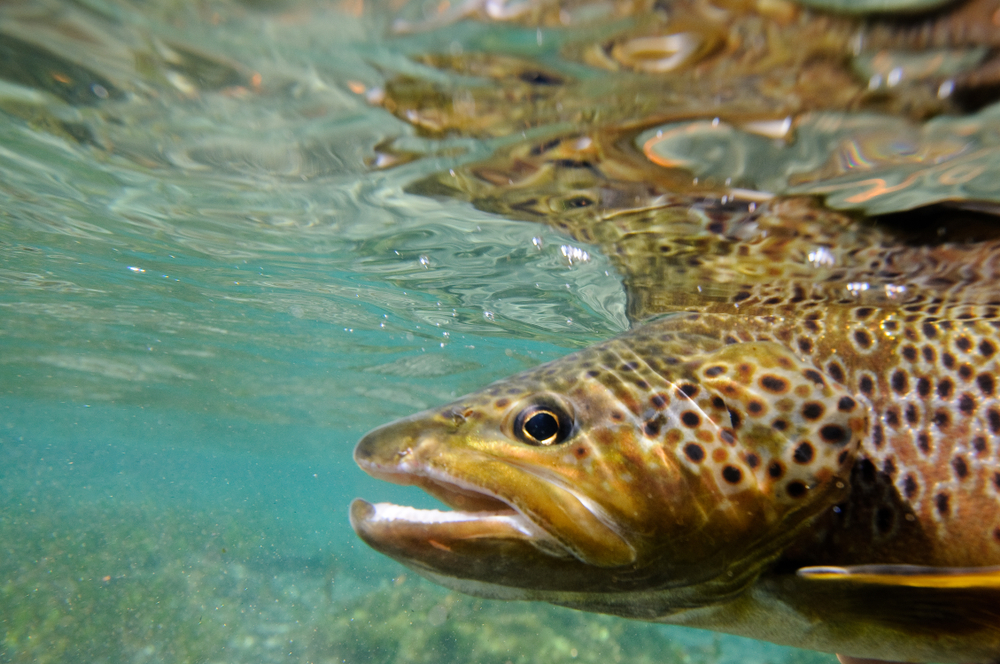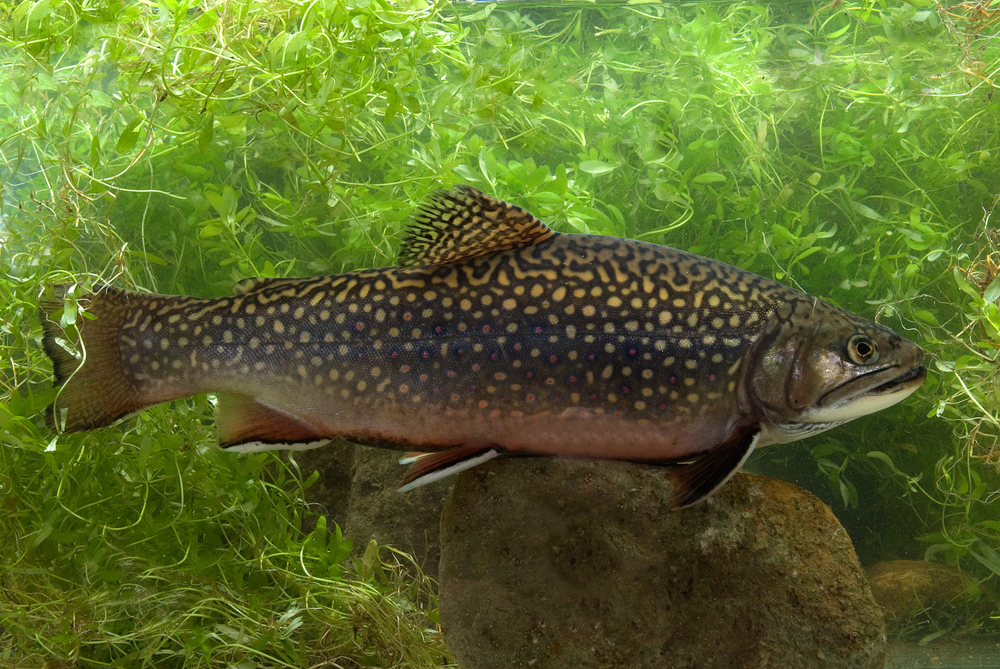This article may contain affiliate links. If you make a purchase after clicking on a link we may earn a small commission at no extra cost to you. As an Amazon Associate, I earn from qualifying purchases.
What Do Trout Eat?

Fishing for trout can be an exciting and rewarding experience, but to be successful, it is important to understand what these fish eat. Knowing what trout eat can help anglers choose the right bait and fishing techniques, increasing their chances of catching a fish.
In this article, we will explore the various types of food that make up a trout’s diet and how understanding these factors can improve your chances of a successful fishing trip.
Understanding the Trout Diet
Trout are opportunistic feeders, meaning they will consume a wide variety of food sources. The primary food sources for trout include aquatic insects, terrestrial insects, small fish, crustaceans, and mollusks.
Understanding the trout’s diet is crucial for successful fishing because it helps anglers choose the right bait and fishing techniques.
Trout are known to feed throughout the day, with the most active feeding periods occurring in the early morning and late afternoon. The type of food they consume will vary based on the time of day, water temperature, and seasonal changes.

Aquatic insects make up a significant portion of a trout’s diet, and the different stages of an insect’s lifecycle can impact its availability as food for trout. For example, during the spring and summer months, mayflies, caddisflies, and stoneflies are commonly found in the water and make up a significant portion of a trout’s diet.
Terrestrial insects also play a vital role in a trout’s diet, and they are typically found in and around the water’s edge. During the summer months, grasshoppers and beetles are abundant, and these insects can be an excellent source of food for trout.
In addition to insects, small fish, crustaceans, and mollusks can also be found in a trout’s diet. Small fish, such as minnows and fry, are commonly eaten by larger trout. Crustaceans, such as crayfish and shrimp, are also a favorite food source for trout. Mollusks, such as snails, are typically found in slower-moving waters and can be consumed by smaller trout.
Understanding the various types of food that make up a trout’s diet is essential for successful fishing. By knowing what a trout is likely to eat, anglers can choose the right bait and fishing techniques to increase their chances of catching a fish.
Aquatic Insects
Aquatic insects are one of the most significant food sources for trout. These insects can be found in streams, rivers, and lakes, and they make up a large portion of a trout’s diet. Some of the most common aquatic insects that trout consume include mayflies, caddisflies, stoneflies, midges, and dragonflies.

Mayflies are a favorite food source for trout and are typically found in slower-moving water. These insects go through various stages in their lifecycle, including nymph, dun, and spinner, and can be found in the water at different times of the day.
Caddisflies are also commonly consumed by trout and are found in a variety of water conditions. These insects can be found in streams, rivers, and lakes and are most active in the early morning and late afternoon.
Stoneflies are another favorite food source for trout and can be found in fast-moving water. These insects are most active in the spring and early summer months and can be found in both nymph and adult stages.
Midges and dragonflies are also commonly consumed by trout and can be found in a variety of water conditions. Midges are typically small and can be found in the water year-round, while dragonflies are larger and are typically found in larger bodies of water.
Understanding the lifecycle of aquatic insects and when they are most active can be helpful for anglers looking to catch trout. By selecting the right bait and fishing techniques that mimic the natural movement of these insects, anglers can increase their chances of catching a fish.
Terrestrial Insects
Terrestrial insects are insects that live on land but are often found in and around the water’s edge. These insects can be a significant food source for trout, especially during the summer months when they are most abundant. Some of the most common terrestrial insects that trout consume include grasshoppers, ants, beetles, and spiders.
Grasshoppers are one of the most abundant terrestrial insects and are a favorite food source for trout. These insects can be found in and around the water’s edge during the summer months and can be easily caught by trout.
Ants are also commonly consumed by trout and can be found in large numbers during the summer months. These insects are typically small and can be difficult to see in the water, so anglers may need to use smaller baits to mimic their natural movement.
Beetles are another favorite food source for trout and can be found in and around the water’s edge during the summer months. These insects are typically larger than other terrestrial insects and can be easily spotted by trout.
Spiders are also commonly consumed by trout and can be found in and around the water’s edge. These insects are typically smaller than other terrestrial insects and can be challenging to see in the water.
Understanding the types of terrestrial insects that trout consume and when they are most abundant can be helpful for anglers looking to catch fish. By selecting the right bait and fishing techniques that mimic the natural movement of these insects, anglers can increase their chances of catching a fish.
Other Food Sources
In addition to aquatic and terrestrial insects, trout also consume other food sources. These food sources can include small fish, crustaceans, and mollusks.
Small fish, such as minnows and fry, can be found in streams and rivers and are commonly eaten by larger trout. These fish can be caught using lures or bait that mimics their natural movement in the water.
Crustaceans, such as crayfish and shrimp, are also a favorite food source for trout. These animals can be found in and around the water’s edge and can be caught using lures or bait that mimic their natural movement.
Mollusks, such as snails, can also be consumed by trout, especially smaller trout. These animals are typically found in slower-moving waters and can be caught using bait that mimics their natural movement.
Understanding the various types of food sources that trout consume can be helpful for anglers looking to catch fish. By selecting the right bait and fishing techniques that mimic the natural movement of these food sources, anglers can increase their chances of catching a fish.
Factors Affecting Trout Diet
Several factors can impact a trout’s diet, and understanding these factors is essential for successful fishing.
Water temperature is one of the most significant factors that can impact a trout’s diet. As water temperatures change, the types of insects and other food sources available to trout can also change. For example, during the colder months, aquatic insects may not be as active, and trout may switch to other food sources such as small fish or crustaceans.
Time of day can also impact a trout’s diet. Trout are most active during the early morning and late afternoon, and during these times, they may be more likely to consume certain types of food sources, such as aquatic insects.
Seasonal changes can also impact a trout’s diet. During the spring and summer months, there may be more insects and other food sources available to trout, while during the fall and winter months, these food sources may be less abundant.
The type of water body can also impact a trout’s diet. Trout in streams and rivers may consume different types of food sources than those in lakes or ponds.
Understanding these factors can help anglers choose the right bait and fishing techniques to increase their chances of catching a fish.
For example, during the warmer months, anglers may want to use bait that mimics the natural movement of aquatic insects, while during the colder months, they may want to use bait that mimics the movement of small fish or crustaceans. By adapting their fishing techniques to these changing factors, anglers can increase their chances of success.
Conclusion
In conclusion, understanding what trout eat is essential for successful fishing. Trout are opportunistic feeders and consume a wide variety of food sources, including aquatic and terrestrial insects, small fish, crustaceans, and mollusks.
Factors such as water temperature, time of day, seasonal changes, and the type of water body can all impact a trout’s diet, and understanding these factors can help anglers choose the right bait and fishing techniques to increase their chances of catching a fish.
By selecting the right bait and fishing techniques that mimic the natural movement of these food sources, anglers can improve their chances of success and have a more enjoyable fishing experience.
